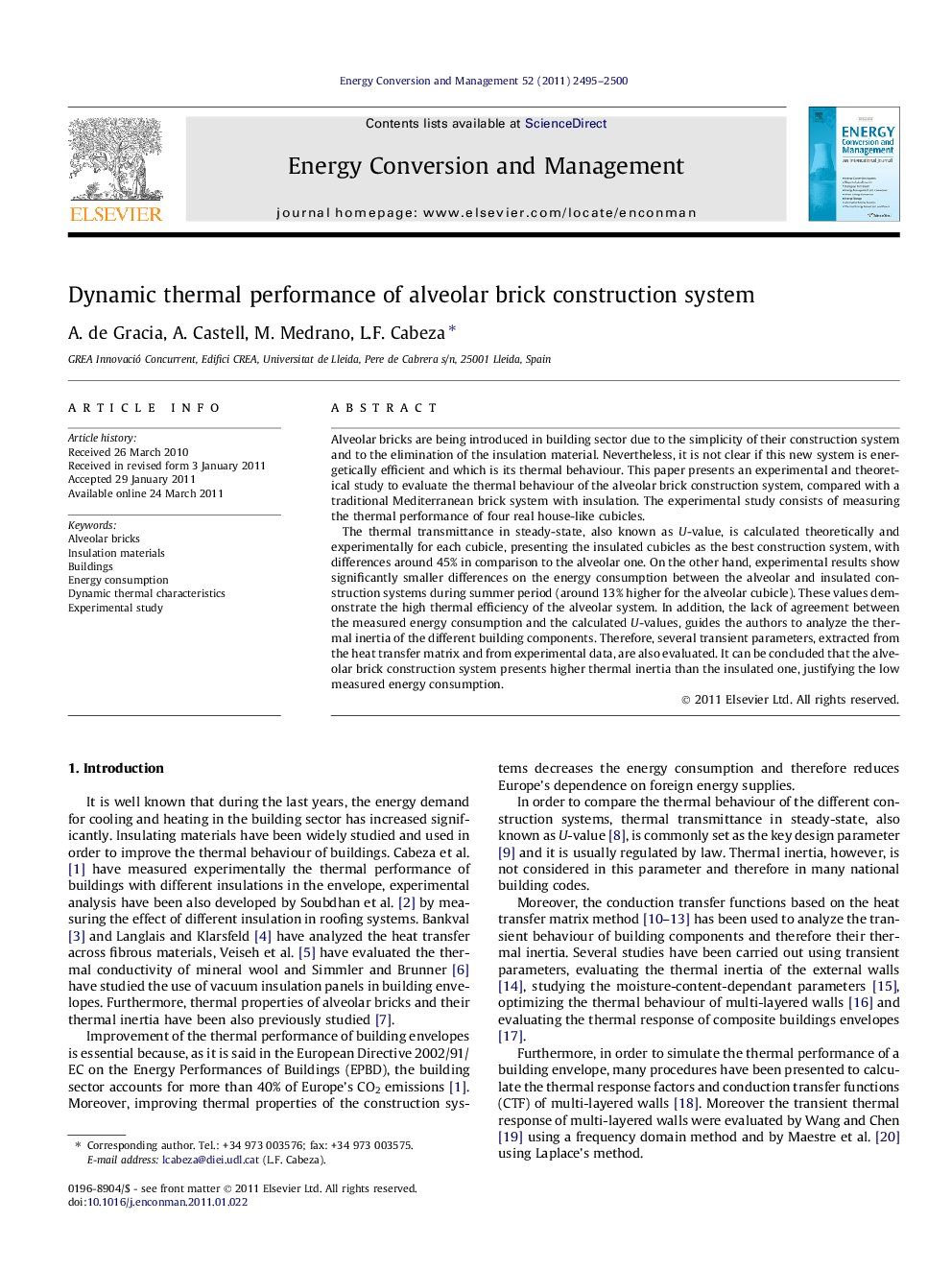| کد مقاله | کد نشریه | سال انتشار | مقاله انگلیسی | نسخه تمام متن |
|---|---|---|---|---|
| 764455 | 896988 | 2011 | 6 صفحه PDF | دانلود رایگان |

Alveolar bricks are being introduced in building sector due to the simplicity of their construction system and to the elimination of the insulation material. Nevertheless, it is not clear if this new system is energetically efficient and which is its thermal behaviour. This paper presents an experimental and theoretical study to evaluate the thermal behaviour of the alveolar brick construction system, compared with a traditional Mediterranean brick system with insulation. The experimental study consists of measuring the thermal performance of four real house-like cubicles.The thermal transmittance in steady-state, also known as U-value, is calculated theoretically and experimentally for each cubicle, presenting the insulated cubicles as the best construction system, with differences around 45% in comparison to the alveolar one. On the other hand, experimental results show significantly smaller differences on the energy consumption between the alveolar and insulated construction systems during summer period (around 13% higher for the alveolar cubicle). These values demonstrate the high thermal efficiency of the alveolar system. In addition, the lack of agreement between the measured energy consumption and the calculated U-values, guides the authors to analyze the thermal inertia of the different building components. Therefore, several transient parameters, extracted from the heat transfer matrix and from experimental data, are also evaluated. It can be concluded that the alveolar brick construction system presents higher thermal inertia than the insulated one, justifying the low measured energy consumption.
► Even though U-value does not measure thermal inertia, it is the commonly used parameter.
► The thermal performance analysis of buildings must include the evaluation of transient parameters.
► Transient parameters of alveolar brick constructive system show good agreement with its low energy consumption.
Journal: Energy Conversion and Management - Volume 52, Issue 7, July 2011, Pages 2495–2500